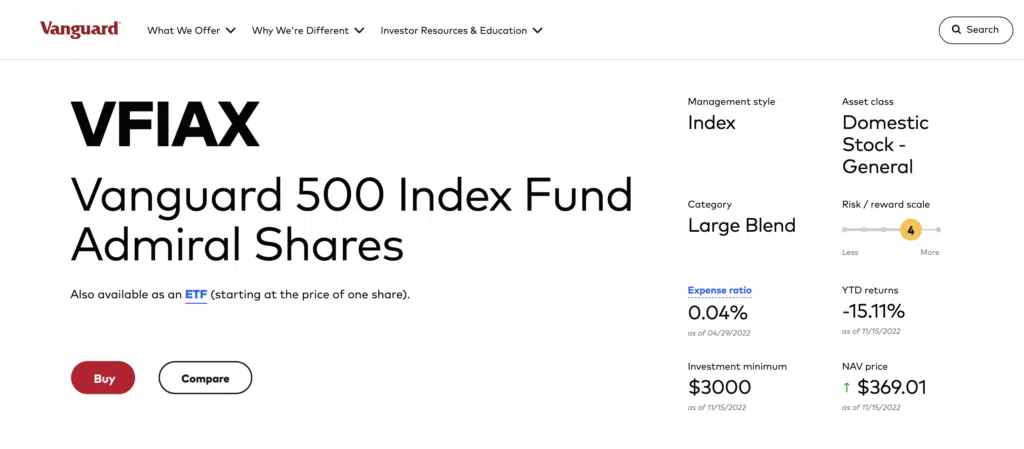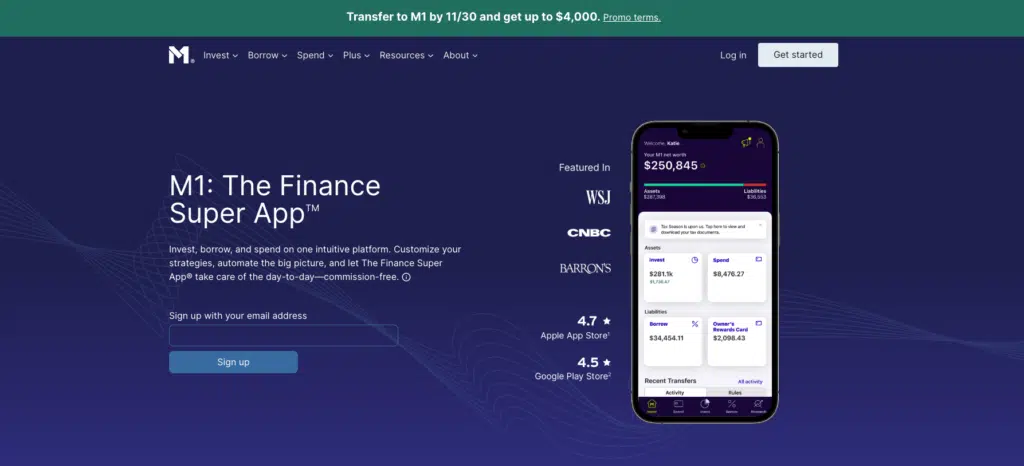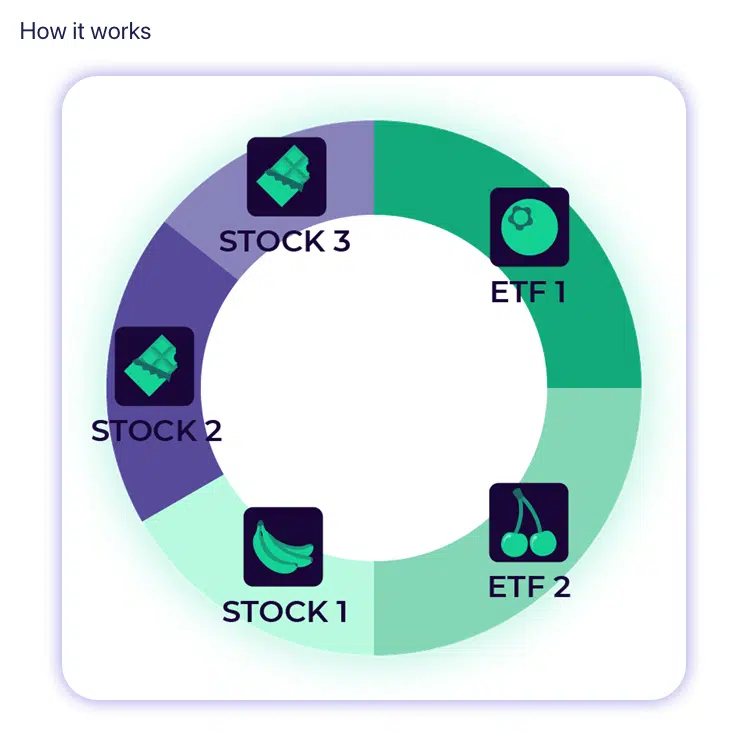Whether you’re a newbie or a seasoned investor, you’ve probably heard these words from a friend or family member who invests in the S&P 500:
“Just buy an index fund.”
Consider the words of the billionaire investor Warren Buffet:
“In my view, for most people, the best thing to do is own the S&P 500 index fund”.
Warren took it one step further, once betting hedge fund manager Ted Seides $1 million that an index fund would outperform a portfolio of hedge funds over the next ten years.
And he won.
But does it make sense for ALL investors to invest in the S&P 500? What if you like to pick stocks? What if you’re not 100% comfortable investing all your money in the stock market?
Let’s look at how the S&P 500 works, along with some pros and cons of investing in the S&P 500, so you can make a more informed decision for YOUR portfolio.
Table of Contents
- What Is the S&P 500?
- S&P 500 Industry Sectors
- What Is Required to Be Listed in the S&P 500?
- Top 10 Companies in the S&P 500
- How to Invest in the S&P 500
- Should You Invest in the S&P 500?
- Pros of Investing in the S&P 500
- Cons of Investing in the S&P 500:
- Create Your Index Fund in M1 Finance
- Should You Buy Individual Stocks and Create Your Own S&P 500 Index?
- What Is the Best Way to Invest in the S&P 500?
- How Much Does the S&P 500 Return Each Year?
- Final Thoughts on Investing in the S&P 500
What Is the S&P 500?
S&P stands for Standard & Poors, one of the most well-known financial companies in the world over the past 150 years.
The S&P 500 is an index of roughly 500 large-cap US stocks. It’s a widely used benchmark for US stock market performance. It differs from the Dow Jones index because it includes a wider range of tech and growth stocks. The Dow Jones only consists of 30 stocks vs. 500 in the S&P.
Interestingly, even though the S&P 500 gives a better representation of the “stock market” performance, my financial planning clients always used the Dow Jones as their reference.
I was often asked, “How’s the Dow doing today?”
Yet, when you read anything about how the market is performing or hear an expert share on CNBC what the market is doing, they usually refer to the S&P.
The S&P 500 also serves as a lead benchmark for US equity performance. When the S&P 500 is up, other US stocks tend to follow suit.
It also gives investors a good gauge to compare how their portfolio or certain investments are performing. For example, if you own Tesla and the S&P is down, but your stock is up, you know your investment is doing well. Thank you, Elon!
S&P 500 Industry Sectors
There are 11 sectors in the S&P 500, ranked below by the percentage of the index represented by each:
- Information Technology (26.4%)
- Health Care (15.1%)
- Consumer Discretionary (11.7%)
- Financials (11.0%)
- Communication Services (8.1%)
- Industrials (7.9%)
- Consumer Staples (6.9%)
- Energy (4.5%)
- Utilities (3.1%)
- Real Estate (2.8%)
- Materials (2.5%)
What Is Required to Be Listed in the S&P 500?
According to SPC Global, to be included in the S&P 500, a company must meet the following criteria:
- It must be headquartered in the United States.
- File financial statements with the SEC (10-K reports)
- Have a market cap above $8.2 billion.
- Have at least 50% of its float-adjusted shares outstanding listed on a US stock exchange.
- It is considered a “blue chip” company, meaning it must have stability and continuity of earnings and dividend payments.
- Not be in bankruptcy proceedings.
- It must have a market capitalization of at least $8.2 billion.
- It must be listed on the NYSE, Nasdaq, or Cboe BZX Exchange.
- It must have posted positive earnings in the most recent four quarters.
The most recent additions include: Crocs, ServiceNow, and Zoom Video Communications.
Top 10 Companies in the S&P 500
1. Apple Inc. (AAPL)
2. Microsoft Corporation (MSFT)
3. Amazon.com, Inc. (AMZN)
4. Alphabet Inc. A (GOOGL)
5. Tesla, Inc. (TSLA)
6. Berkshire Hathaway Inc. (BRK.B)
7. Unitedhealth Group Inc (UNH)
8. Alphabet Inc. C (GOOG)
9. Exxon Mobil Corporation (XOM)
10. Johnson & Johnson (JNJ)
The companies change often, but these ten have been pretty consistent over the last five years. Apple, Amazon, and Google (Alphabet) are all tech companies. These three companies make up a large portion of the S&P 500 index. In fact, as of October 2019, they make up about 22% of the entire index!
How to Invest in the S&P 500
There are many ways to invest in the S&P 500. You can buy individual stocks, purchase an index fund or exchange-traded fund (ETF), or create your own M1 Finance index fund (I’ll cover that later.)
Buy individual stocks: This is probably the most challenging way to invest in the S&P 500. Not only do you need to have a large sum of money to invest, but you also need to know what stocks to buy. And even if you buy the right stocks, there’s no guarantee they will perform well.
Purchase an index fund: An index fund is a type of mutual fund that aims to track the performance of a specific market index, such as the S&P 500. Index funds are a great way to invest in the stock market because they offer diversification and professional management.
The largest 3 mutual funds on the S&P 500 are :
- Vanguard 500 Index Fund Admiral Shares (VFIAX)
- Vanguard Institutional Index Fund Institutional Plus Shares (VINIX)
- Schwab S&P 500 Index Fund (SWPPX)

Buy an ETF: An exchange-traded fund (ETF) is a type of investment fund that tracks the performance of a particular asset or group of assets. Like index funds, ETFs offer diversification and professional management.
The top 3 S&P 500 ETFs are:
- SPDR S&P 500 ETF (SPY)
- iShares Core S&P 500 ETF (IVV)
- Vanguard S&P 500 ETF (VOO)
If you can’t handle the ups and downs of the stock market, don’t buy the S&P 500.
Should You Invest in the S&P 500?
There’s no easy answer to this question. It depends on your goals, risk tolerance, and time horizon. If you’re investing long-term and can stomach a little volatility, then investing in the S&P 500 may be a good choice. However, if you’re looking for immediate returns or can’t handle the ups and downs of the stock market, don’t buy the S&P 500.
Pros of Investing in the S&P 500
Diversification: When you invest in the S&P 500, you’re buying a piece of 500 different companies. This diversification can help protect you from losses if any one company underperforms. And since the index represents 11 different industry sectors and approximately 80% of the total capitalization of all US stock markets, you can enjoy overall diversification in the US economy.
Professional management: Index funds and ETFs are managed by professionals who know how to pick stocks and allocate assets, taking the guesswork out of investing for many people.
Low cost: Because S&P funds are tracking the index, there is little to no active management required. Therefore, fund managers can keep costs to a minimum. This is unlike actively managed mutual funds, whose managers are trying to beat the benchmark.
An ETF’s annual expense ratio, often less than 0.10%, will have a minimal impact on your overall returns. This compares well to the 1% – 2% MERs charged annually by active mutual funds.
The S&P 500 outperforms actively managed funds: The Index beats nearly 80% of actively managed funds.
S&P 500 index funds pay dividends: Since the index represents the largest corporations in America, many are well-established companies that pay dividends regularly. Those dividends are paid to investors through the fund. For example, the Schwab S&P 500 Index Fund has a dividend yield of 1.54%.
Performance: The S&P 500 has an average annual return of 9.4% between 1972 and 2021. And, as it turns out, it turns positive returns in the vast majority of years!
Cons of Investing in the S&P 500:
Volatility: The stock market can be volatile, which means that the value of your investment can go up and down. If you’re investing for the short term, this volatility can be a big risk.
No guaranteed returns: There’s no guarantee that you will make money by investing in the S&P 500, and you could lose money.
No international diversification: The S&P 500 is invested entirely in companies that trade on US stock exchanges, and there is no foreign exposure to established or emerging markets.
Large-cap stocks only: The index comprises the US’s 500 largest publicly traded companies. It provides no diversification into mid- and small-cap stocks.
The S&P 500 doesn’t always lead the market: Though it has outperformed other indices in recent years, that isn’t always the case. Other investment strategies, like value investing and small-cap stocks, have performed better in different market environments.
Market capitalization weighting: Though the S&P 500 represents the 500 largest publicly traded corporations in America, the index itself is calculated by the market weight of each component company. The companies with the largest market capitalization make up a disproportionate percentage of the index value.
For example, as of April 2022, the ten largest holdings in the index represented nearly 30% of its total value. A severe decline in the stock price of any of just three or four of those top holdings could have an outsized negative effect on the index’s overall performance.
Create Your Index Fund in M1 Finance

With M1 Finance, you can easily create your own index fund and invest in the S&P 500 with no management fees or commissions. Plus, you can reinvest your dividends and grow your investment over time.
To get started, sign up for a free account and then follow these steps:
1. Choose the S&P 500 from the list of indexes.
2. Select the stocks that you want to include in your fund. You can choose the stocks manually or have M1 Finance select them based on your goals and risk tolerance.
3. Set up a recurring investment plan to regularly invest in your fund.
M1 Finance uses a unique investment vehicle referred to as “Pies.” These are custom-designed portfolios that you can fill with up to 100 individual stocks and exchange-traded funds.

You can hold most of your money in a pie with three or four different S&P 500 index funds. But if you want to diversify beyond the S&P 500, you can also set up additional pies, focus on different indexes, or choose your own individual stock holdings.
Once you create your pies, M1 Finance will manage them for you. That includes periodic rebalancing to maintain target allocations. And there is no fee charged for this service.
You can open an account with M1 Finance with no money at all, though you will need at least $100 to begin investing (or $500 for retirement accounts). Available accounts include individual and joint taxable brokerage accounts; traditional, Roth, rollover, and SEP IRAs; and trust and custodial accounts. Learn more in our M1 Finance review.
Get Started with M1 Finance Today
Should You Buy Individual Stocks and Create Your Own S&P 500 Index?
There’s no denying that platforms like M1 Finance, Robinhood, and other alternatives give you a low-cost and simpler way to create your own index fund, but it doesn’t necessarily mean you should.
Even with nifty rebalancing options, you still have to go through the process of buying ALL 500 individual stocks.
And when a stock is removed from the index, you’ll need to replace it and rebalance your portfolio.
It’s a lot of work that I don’t think offers enough upside rewards.
Can You Just Invest in the S&P 500?
Some investment advisors recommend investing all or most of your money in the S&P 500. The recommendation is especially common for younger investors.
The theory is that you can afford to be 100% invested in stocks – or something close to it – because even if the market falls, you’ll have several decades to recover.
It’s never a wise idea to hold your entire portfolio in a single asset or fund, even if it’s performing very well, as the S&P 500 has for most of the past decade.
But there’s no guarantee that the trend will continue.
Meanwhile, your portfolio should include positions in fixed-income investments, like government and corporate bonds, cash, and cash equivalents. These positions will not only reduce the negative impact of a decline in the stock market but will also help you to maintain liquidity, so you can increase your stock position after a big market selloff.
The best strategy may be to hold most of your stock position in the S&P 500 and diversify into other stock sectors and international markets, along with bonds and cash.
What Is the Best Way to Invest in the S&P 500?
Earlier, I listed the three largest ETFs and mutual funds invested in the S&P 500 index. Given that these are the largest S&P 500 index funds and commonly held in professionally managed portfolios, each represents a popular way to invest in the index.
The table below provides a breakdown of the most important details of each of those six funds:
| Fund / Feature | Fund type | Minimum investment | Expense ratio | 1 Year Return | 5 Year Return | 10 Year Return |
|---|---|---|---|---|---|---|
| Vanguard 500 Index Fund Admiral Shares (VFIAX) | Mutual fund | $3,000 | 0.04% | -15.51% | 9.20% | 11.66% |
| Vanguard Institutional Index Fund Institutional Plus Shares (VINIX) | Mutual fund | $5 million (as the name implies, this fund is designed for institutions) | 0.04% | -15.50% | 9.21% | 11.67% |
| Schwab S&P 500 Index Fund (SWPPX) | Mutual fund | No minimum | 0.02% | -15.49% | 9.21% | 11.64% |
| SPDR S&P 500 ETF (SPY) | ETF | $1 for a fractional share | 0.945% | -15.53% | 9.09% | 11.56% |
| iShares Core S&P 500 ETF (IVV) | ETF | Not indicated | 0.03% | -15.50% | 9.20% | 11.66% |
| Vanguard S&P 500 ETF (VOO) | ETF | No minimum | 0.03% | -15.39% | 9.23% | 11.68% |
As you can see, the six funds are very similar, especially their one, five, and ten-year performance numbers. And except for the SPY, each has an expense ratio well below 0.10%. The main difference is that the VFIAX has a minimum initial investment of $3,000, while four funds have either no minimum requirement or very little.
Any of these funds (except the VINIX with its $5 million minimum requirement) will be a suitable way to invest in the S&P 500 index.
You can invest in any of these funds through the fund family (Vanguard, Schwab, SPDR, or iShares) or a discount broker. But be aware that while brokers typically charge no commissions on buying and selling ETFs, many still charge fees for mutual funds. Therefore, you should favor ETFs if you’re investing through a broker.
How Much Does the S&P 500 Return Each Year?
The average annual return on the S&P 500 was 10.58% between 1972 and 2023. During that 50-year timeframe, the index provided positive returns in 40 years, with losses in the remaining 10.
The performance has been even more impressive for the 10-year period from 2012 through 2021. During that decade, the average annual return on the S&P 500 was nearly 14.8%.
But it’s always important to remember that these statistics represent averages. You shouldn’t expect to earn 9.4% in any given year, though the return may average that over a decade or more. Along the way, expect years when the index will return more than 20% – or lose more than 20%.
Therefore, investing in the S&P 500 index is best used as a long-term strategy.
Final Thoughts on Investing in the S&P 500
There’s little doubt the S&P 500 has become the go-to stock market investment. For that reason alone, it should represent the largest stock position in your portfolio. But diversification should never be overlooked, so be sure to hold smaller allocations in other stock sectors and cash and bonds.








Leave a Reply